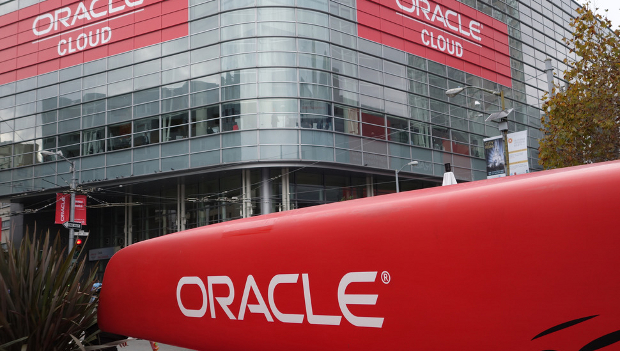As Oracle looks to keep pace with cloud computing giants Amazon Web Services and old rivals like Microsoft, the company is increasingly leaning on one key differentiator: automation.
It began with the launch of a ‘self-driving database’ at Oracle OpenWorld in 2017, with founder and CTO Larry Ellison touting that it would run automatically without the need of a database administrator, including self-tuning, self-provisioning and self-patching.
The database, which is marketed as the Oracle 18c, uses machine learning techniques to anticipate and automate any issues.
“The Oracle autonomous database is now fully available in the Oracle Cloud, and there are more autonomous cloud services to come,” Ellison said in a Q3 2018 earnings call. “No other cloud provider has a fully automated database. One that automatically and immediately applies security of assets without requiring any scheduled downtime. Oracle’s autonomous database features are absolutely unique.”
Expanded automation
The tech giant is not stopping there though. In February the vendor firmed up some of these promises by announcing that it would be expanding this level of automation beyond the database to all other parts of its cloud platform, making its PaaS offerings self-driving, self-securing, and self-repairing.
“During this calendar year, we expect to deliver autonomous analytics, autonomous mobility, autonomous development and autonomous integration services. Oracle’s new suite of autonomous PaaS services delivers an unprecedented level of automation and cost savings to our customers,” Ellison added on the call.
“Our highly automated suite of autonomous PaaS services reduces cost by reducing human labour and improves reliability and security by reducing human error. No other cloud provider has anything like it.”
Cost benefits
The overarching aim here is to use machine learning to automate some key enterprise IT functions such as tuning, back-ups and upgrades whilst delivering high performance and availability. This should provide customers with lower costs, reduced risks and easier access to making smarter decisions.
“The future of tomorrow’s successful enterprise IT organisation is in full end-to-end automation, at Oracle we are making this a reality,” Amit Zavery, EVP of product development at Oracle Cloud said following the announcement.
In fact, Oracle predicts that 80% of application and infrastructure operations will be resolved autonomously by 2020. In an aim to bring the predictions to life it believes that the addition of autonomous operations will simplify management and increase productivity.
Ray Wang, principal analyst at Constellation Research said “Oracle’s push to completely autonomise IT operations cross its ‘Red Stack’ gives customers a cost-effective option. As Oracle plays catch up in the cloud, the automation and AI differentiation will prove to be an asset as it competes with rivals earlier to market but with older architectures.”
The competition
Oracle has long been accused of being late to the cloud, and still lags behind the cloud giants AWS and Microsoft in the lucrative infrastructure-as-a-service (IaaS) market, with Oracle not even cracking the top ten in 2016 according to Gartner.
That has not stopped Oracle from touting its cloud credentials loud and clear though, from the stage at OpenWorld to its quarterly earnings calls.
For example, during its Q3 2018 earnings call Oracle CEO Mark Hurd said: “The fact is that we are taking market share, and with autonomous database just beginning to show up in our pipeline, this will only strengthen our technology ecosystem growth.”
Oracle will say its strategy is paying dividends, with its latest financial results showing total cloud revenues up by 32% in Q3 2018. However, as Angela Eager at TechMarketView notes: “the rate of cloud growth has decelerated in each quarter,” down from the 44% growth of Q2 and 51% of Q1.
Head to head with automation
Oracle certainly is not alone in its thinking here too. Microsoft’s cloud-evangelising CEO Satya Nadella shifted the Azure mantra from “cloud first, mobile first”, to “intelligent cloud, intelligent edge” in 2017.
As a result, the company is investing heavily in AI and machine learning to make its cloud platform more intelligent for users. The difference from Oracle’s automation play is subtle, but the two are still on the same track.
Then there is the German software giant SAP, which is looking into automation use cases with specific clients through its Leonardo platform.
Brenton O’Callaghan, global head of SAP Leonardo and Bluefin said, “SAP’s focus on automation and the intelligent enterprise is differentiating from others in the marketplace: it concentrates on the users and the business process rather than leading just with the technology.”
Speaking specifically about Leonardo he added that they are focusing on creating specific solutions for clients “by putting their needs and motivations first.
“Those solutions are then brought to life via the latest in automation and artificial intelligence technologies using the SAP Cloud Platform,” he said.
So, although Oracle will say it heads the market on innovation, it is certainly not the only business looking ahead towards the impact automation will have on the industry.
IDG News Service








Subscribers 0
Fans 0
Followers 0
Followers